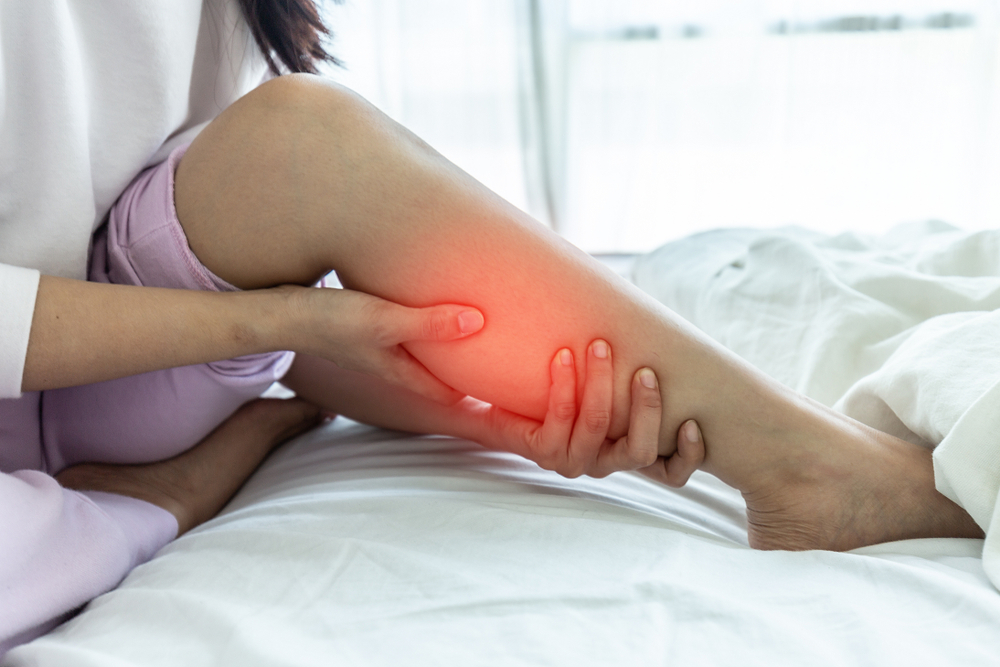Complex Regional Pain Syndrome: Symptoms & Treatment
PUBLISHED ON:
April 21, 2020
Complex Regional Pain Syndrome: What Is It?
Complex Regional Pain Syndrome (CRPS) is a chronic pain condition that usually occurs after an injury. Damage to the peripheral and/or central nervous system causes CRPS to reside in one limb, most commonly in the arm, leg, hand, or foot. There are two different classifications of CRPS. Individuals that do not have a confirmed nerve injury but are showing symptoms are diagnosed with CRPS I. Patients with a confirmed nerve injury are diagnosed with CRPS II. The treatment for both CRPS I and CRPS II are very similar despite there being two different categories of the condition. CRPS can happen to anyone, but is most commonly seen in women around age 40.

CRPS is diagnosed based on a patient’s signs, symptoms, and medical history. There is no test to diagnose CRPS which is why transparency with your doctor and careful examination are critical in providing an accurate diagnosis. Injury to the affected area is what distinguishes CRPS from other conditions that present similar symptoms, such as Lyme disease or generalized muscle diseases. The pain with CRPS is typically out of proportion to the severity of the injury which makes the condition difficult to understand, however early intervention and treatments can be highly successful and lead to remission.
Symptoms of Complex Regional Pain Syndrome
Symptoms of CRPS can vary from person to person. Early onset symptoms include hypersensitivity to cold and touch, while things like skin color and muscle spasms may develop over time. In general, symptoms of CRPS include…
- Constants severe pain. This is one of the key markers of CRPS where the pain is described as burning or pins and needles in the affected limb.
- Allodynia: Normal contact of the skin is extremely painful
- Swelling of affected area
- Change in skin texture: skin may appear to be shiny and/or thin
- Stiffness in affected joints
- Muscle spasms and tremors
- Atrophy: muscle weakness and loss
- Decreased mobility in affected area
- Changes in nail and hair growth
Treatments for Complex Regional Pain Syndrome
There are several treatments available to individuals with CRPS, and typically, a combination of therapies is used to yield the best results. Noninvasive treatments for CRPS are:
- Physical Therapy & Rehabilitation: Movement of the affected limb improves its strength, flexibility, and overall function. Rehabilitation also helps prevent or even reverse the secondary brain changes that are commonly associated with chronic pain.
- Psychotherapy: Chronic pain conditions can often-times feel disabling and have profound psychological symptoms. Anxiety, post-traumatic stress disorder, and depression can develop as a result of CRPS and heighten the perception of pain. Treating this psychologically can help patients cope and recover from CRPS.
- Medications: Several classes of medications have been proven to be effective in treating CRPS
- Non-steroidal anti-inflammatory drugs such as Ibuprofen, Asprin, and Naproxen
- Corticosteroids such as methylprednisolone (Medrol)
- Topical anaesthetic such as lidocaine
More invasive, yet effective, treatments for CRPS include:
- Sympathetic Nerve Blocks: Nerve blocks can provide temporary relief. Read more about nerve blocks here
- Spinal Cord Stimulation: Neuromodulation is a minimally invasive, outpatient procedure that utilizes electrode lead implants to treat pain. You can read more about stimulators here
- Intrathecal Drug Pumps: Pump devices release pain-relieving medication directly into the stream of fluids that surround the spinal cord. Pumps are able to reach the pain-signaling targets that reside in the spinal cord with a much lower dose of opioids than oral medication would require.
CRPS can be painful, frustrating, and make patients feel debilitated and defeated. Thankfully there are many treatment options to help improve this condition both physically and psychologically. Candid conversations with your physician are always a necessity in order to properly diagnose and treat your pain. If you experience constant, severe pain that is affecting your limbs, particularly after a known injury or stroke, contact your doctor and seek treatment early. Early intervention will bring relief sooner and ultimately give your quality of life, back to you.
PUBLISHED ON:
April 21, 2020


